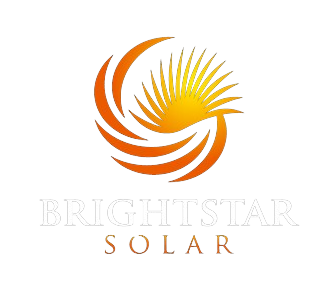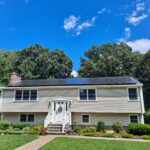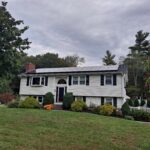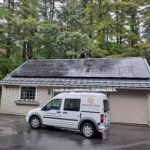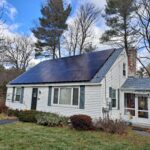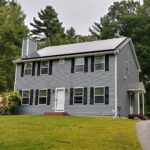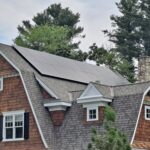Today, just about every residential and small commercial solar panel installation in Massachusetts uses either Enphase or SolarEdge, which are microinverters or a system of DC optimizers paired with a single inverter. Solar panels produce DC current when exposed to light, but the appliances in our homes run on AC. In order to use the power coming off a solar roof (or to sell that power back to the electric utility), we need to convert the solar panels’ output to AC. This is the job of an inverter (or inverters).
The inverter is responsible for not only creating high-quality AC electricity that we can use in our homes but also doing it safely and efficiently so that we get the maximum return on our investment. We want to make sure as much electricity is delivered from the panels to our homes as possible – this is how the panels literally pay for themselves.
How are Enphase microinverters and the SolarEdge system similar?
- Module-Level Electronics (MLE) control each panel independently, allowing them each to produce their maximum instantaneous potential power rather than being choked by a shaded, defective, or snow-covered panel somewhere in the array
- Panel independence can lead to energy harvest that is as much as 40% higher than traditional string inverters
- MLE’s also allow for panel-by-panel monitoring. This is unbelievably valuable if there is ever a malfunctioning panel because it allows us to pinpoint the problem while the rest of the system operates at its full potential. The monitoring is also very interesting to look at as it shows the effects of partial shade throughout the day, partial snow cover, the effects of different roof pitches and azimuths, etc.
- Code compliance and safety – both systems have a means of meeting the “Rapid Shutdown” requirement for PV systems that started with the 2014 National Electric Code. This means both Enphase and SolarEdge systems eliminate the presence of high voltage DC in a PV system at all times (Enphase) or with the flick of a switch (SolarEdge).
- Strong warranty – the rooftop electronics (Enphase or Solaredge) have a 25-year warranty.
Why Enphase might be a better solution?
- Cost might be lower for a small system (less than 18-20 panels)
- Eliminates the need to locate an inverter somewhere. We choose to design with Enphase when customers have a small finished basement, for example.
Why SolarEdge may have an edge?
- Typically is less costly for larger systems (our average residential system has about 30 panels)
So do the owners of a Massachusetts solar company choose Enphase or Solaredge on their own home’s roof? Sorry, our answer won’t help you decide! In 2010 we built a small system with Enphase microinverters, then built a larger array with the SolarEdge system when we moved a few years later. The performance and reliability of both have been perfect (100% uptime). Let our company help you decide which Enphase or Solaredge is right for your home. Brightstar Solar is one of the oldest and most reputable solar companies in Massachusetts. Please call us at 617-564-0050 or contact us for a free solar consultation of your home or business. We can tell you about zero down solar financing solutions, such as the Mass Solar Loan, that can help save money on your monthly utility costs almost from day one.

